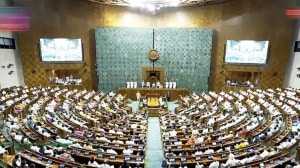After decades of progress in the fight against AIDS, a new report warns that millions of lives are now at risk due to a sudden funding crisis. A major chunk of international aid, led by the United States, has been pulled back in the past six months, threatening to undo years of work that saved lives and prevented new HIV infections around the world.
The UNAIDS 2025 Global AIDS Update, released this week, reveals that the withdrawal of US support through PEPFAR (President’s Emergency Plan for AIDS Relief) is already having a “systemic shock” on global HIV treatment and prevention programs. If this funding gap continues, it could lead to over 4 million more AIDS-related deaths and 6 million additional HIV infections by 2029, the report says.
A 40% drop in infections could be reversed
Until recently, the global fight against HIV/AIDS had shown promising results. Since 2010, new HIV infections have dropped by 40 per cent, and AIDS-related deaths are down 56 per cent, due to major public health efforts and access to life-saving medicines. But that progress is now hanging by a thread.
Much of this success was funded by PEPFAR, which has provided medicines, tests, and health support to millions in low- and middle-income countries. The sudden halt in this aid has left clinics underfunded, health workers unpaid, and life-saving services unavailable in many regions.
“We have seen services vanish overnight. Health workers have been sent home. And people, especially children and key populations, are being pushed out of care,” said Winnie Byanyima, Executive Director of UNAIDS. She described the situation as a “ticking time bomb.”
The most at-risk population
In 2024 alone, 1.3 million new HIV infections were reported globally. Despite decades of progress, 9.2 million people living with HIV did not have access to treatment last year. Among them were 6.2 lakh children under the age of 14, resulting in 75,000 AIDS-related child deaths in just one year.
The report also warns that more countries are now criminalising people at higher risk of HIV, including sex workers, drug users, and LGBTQ+ communities, which could further worsen the crisis by pushing people away from seeking help.
What the report says about India
India continues to have one of the world’s largest populations living with HIV. As of 2024, 25.6 lakh people were living with HIV in the country. That year saw 64,000 new HIV infections and about 32,000 AIDS-related deaths.
India has made consistent progress since 2000. From 0.55 per cent in 2000, the rate dropped to 0.2 per cent by 2023. However, doctors are now warning about a potential resurgence of HIV, especially among young people, which mirrors the rise in other sexually transmitted infections like HPV, syphilis, and hepatitis B.
“We must step up testing and screening to catch infections early and stop their spread,” said Dr. I.S. Gilada, President Emeritus of the AIDS Society of India.
Why the funding crisis is a global threat
The sudden gap in funding comes at a time when scientific and medical breakthroughs are closer than ever to changing the way HIV is treated and possibly even cured.
“We are seeing extraordinary breakthroughs in prevention and treatment, including injectable medications that could protect people for months at a time,” said Dr. Beatriz Grinsztejn, President of the International AIDS Society (IAS).
“But these advances are at risk if funding collapses. Clinical trials may stall. Millions may lose access.”
95-95-95 targets met in 7 countries
Despite the challenges, there are still bright spots. As of December 2024, seven countries, including Botswana, Eswatini, Lesotho, Namibia, Rwanda, Zambia, and Zimbabwe, have met the 95-95-95 global HIV targets. That means:
- 95 per cent of people living with HIV know their status,
- 95 per cent of them are on treatment,
- And 95 per cent of those on treatment have viral suppression (meaning the virus is under control and unlikely to spread).
The report also shows the arrival of long-acting injectable PrEP, such as Lenacapavir, which has shown near-complete success in clinical trials. However, affordability and access are still major roadblocks.
A Global Call for Action
UNAIDS and experts worldwide are urging governments, donors, and communities not to let decades of progress go to waste. Without immediate and sustained global funding, especially from major contributors like the US, the world risks falling back into a full-blown AIDS crisis, one that could cost millions of lives and affect future generations.








